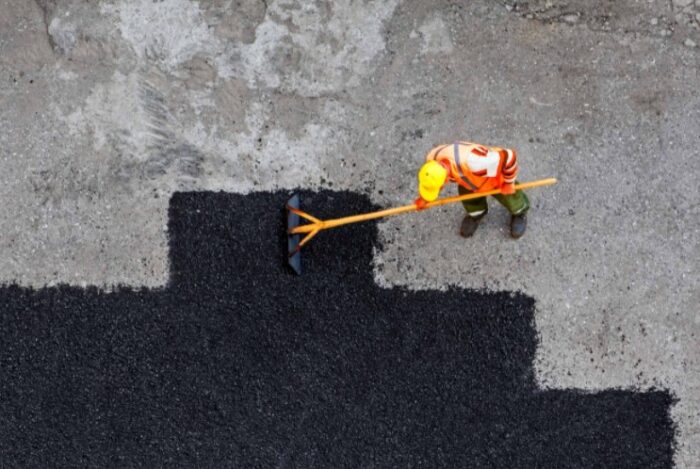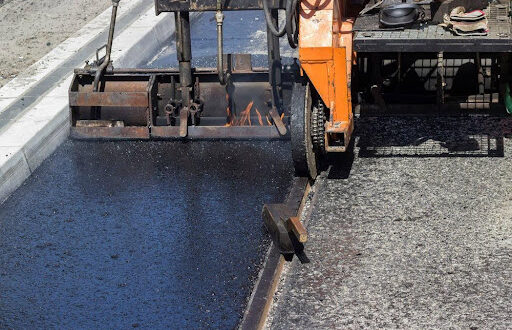Asphalt paving is an excellent choice for any property, as it provides lots of traction and helps reduce glare during bright summer days. It also cures quickly, even within 24 hours, unlike concrete that usually requires days if not weeks of curing before you can use a road or driveway again! Its dark color also provides an excellent background for lines and markings, while the material’s porous nature absorbs sound as well as vibration.
However, even with its many advantages, it’s vital that property owners care for new asphalt properly so that it stays strong and durable over the years. Check out a few simple tips for ensuring your new pavement looks its best and stays in good repair as long as possible. Moreover, be sure to discuss this information with asphaltpavingdallastx.com!
How Long Should You Wait Before Driving on New Asphalt?

Asphalt doesn’t need to cure as long as concrete before it can handle light vehicle traffic, as said. In most cases, you only need to wait 24 hours for it to set before driving on it; in hot weather, wait for at least 48 to 72 hours before using that pavement.
While 24 hours is typically sufficient wait time for new asphalt, note that the longer you wait for the material to cure, the more it will harden and resist damage. If you can keep vehicles off your fresh asphalt for longer than 24 hours, consider doing so, as an investment in that pavement’s overall condition and longevity.
Will Rain Ruin New Asphalt?

Asphalt is made with a mixture of oil-based bitumen and aggregate. When mixed together, bitumen hardens around the aggregate, forming pavement. However, since oil and water don’t mix, heavy rainfall can damage the fresh material, causing that bitumen to separate and the oil base to rise to the surface.
To avoid this risk, ensure you schedule asphalt installation during a dry season in your area and be ready to cover fresh asphalt if it should start to rain. Your installation contractor can offer more advice on protecting that fresh pavement in the case of rain or inclement weather.
Are Asphalt and Blacktop the Same?

While the words asphalt and blacktop are often used interchangeably, moreover, the two materials are made from the same base products, they are technically different. Blacktop contains a higher concentration of crushed stone than asphalt, used for added traction and to give its finished product a bit of “sparkle” or visual interest.
While blacktop provides more traction as well as added aesthetics, that higher concentration of crushed stone is not as durable under the weight of heavy vehicle traffic. In turn, blacktop is often used for playgrounds, basketball and tennis courts, also residential paving, while asphalt is preferred for public roads, parking lots, and other areas with heavier, more frequent vehicle traffic.
Are 2 Inches of Asphalt Enough for a Driveway?

Some paving contractors might suggest just 2 inches of fresh asphalt for a driveway, this can be sufficient in some cases. Thin asphalt can withstand lightweight traffic; for example, if you only drive one small car over that driveway, 2 inches can withstand that weight over the years.
However, the thinner it is, the more prone it is to cracking, chipping, and other such damage, especially when exposed to heavier along with more frequent vehicle traffic. If you drive a midsize car, if there is more than one vehicle in the family, and if you use the driveway frequently, it’s best to start with 4 inches of asphalt pavement.
An asphalt installation contractor might even suggest a thicker layer of it for driveways exposed to unusually heavy or frequent traffic. For example, if you own a motorhome or commercial truck, if you park a heavy vehicle on the driveway, or if the driveway is used frequently throughout the day, consider investing in up to 9 inches of asphalt, to ensure it stays durable over the years.
Can You Install Asphalt Over Old Asphalt?

Depending on the thickness of the current asphalt, you can typically add a fresh layer over the existing pavement. A new layer adds durability to your pavement as well as added traction. A fresh asphalt layer, free of fading and other damage, provides an excellent backdrop for new markings and lines.
To ensure a smooth finish, it’s vital that the current layer should be in good condition, to hold the new one in place as it cures and dries. New asphalt also needs a solid foundation or base under it, to keep it in place and prevent it from sinking and then cracking. Prepare to fill in potholes and cracks along with the existing before installing a new layer, to ensure it stays in good condition.
How Long Should New Asphalt Paving Last?

As with any building material or surface on your property, its life expectancy depends on the quality of materials chosen and if it’s installed properly, and on how well you maintain that asphalt over the years! In many cases, it will last between 25-30 years before it degrades so much that it needs removal and replacement.
Asphalt might degrade faster in areas with extreme weather conditions or temperature fluctuations; heavy rain, for example, might break down the oil-based bitumen in it, while frequent freeze-thaw cycles also lead to premature cracking and other damage. Not investing in asphalt thick enough to manage standard traffic over the pavement will also lead to premature breakdown.
To keep it in good condition as long as possible, invest in regular power washing, to remove gritty and oily debris that can break down its binders. Spraying down asphalt on a hot day can also keep it cool, which also helps prevent premature breakdown.
Property owners should also invest in needed patching and sealing for new asphalt paving. Neglecting to fill cracks and chips can let them get larger and more extensive, while seal coating provides an added layer of protection for asphalt, keeping it in good condition for as long as possible.
 Hi Boox Popular Magazine 2024
Hi Boox Popular Magazine 2024



